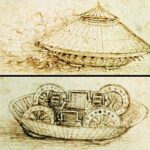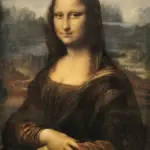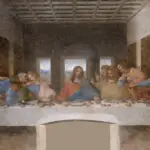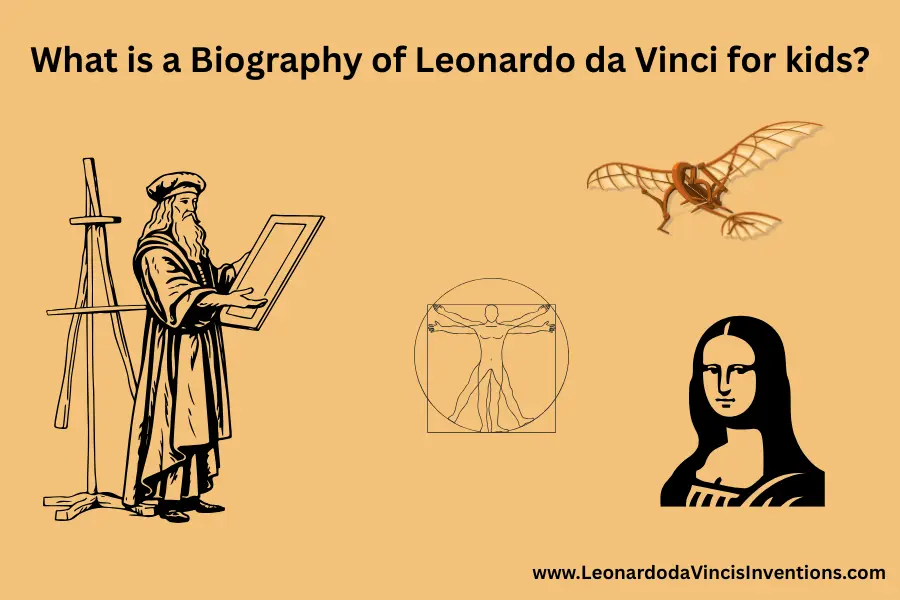
Leonardo da Vinci biography for kids often feels hard to understand because of big words and confusing details.
Many students struggle to find simple facts about this famous artist and inventor. This article presents basic information in a clear and accessible way for young readers.
You can expect to learn about Leonardo da Vinci’s life, his notable creations, and why he remains crucial today.
Leonardo da Vinci was an Italian artist, inventor, and scientist from the Renaissance.
He is famous for his paintings, such as the Mona Lisa, and his groundbreaking ideas about machines and the human body.
He was born near Vinci, Italy, in 1452 and began studying art at a young age.
Early Life of Leonardo da Vinci
Leonardo da Vinci’s early life shaped him into a renowned polymath, renowned for his creativity and groundbreaking discoveries.
His childhood in Italy laid the groundwork for a journey that would lead to memorable artworks and inventions.
Growing Up in Italy: Florence and Vinci
Leonardo was born on April 15, 1452, in Vinci, a small town in Italy, close to Florence.
His father, Ser Piero, worked as a notary, and his mother, Caterina, was a local peasant.
They did not marry, but Leonardo still grew up surrounded by his father’s family.
The countryside around Vinci provided Leonardo with numerous opportunities to observe nature and its inhabitants.
He also spent time in Florence, a city known for art and creativity during the Renaissance.
This allowed him to see many brilliant works and meet essential artists and thinkers.
Many historians believe these places inspired his lifelong interest in art and science.
To learn more about his childhood, see the Leonardo da Vinci biography for kids.
Leonardo’s Curiosity and Early Learning
Leonardo showed curiosity and a keen eye for how things worked from a young age.
His family noticed that he enjoyed asking questions, taking things apart, and learning by watching and doing.
This curiosity later enabled him to study anatomy, inventions, and the natural world.
He did not attend regular school, but his father ensured that he learned to read, write, and perform basic math.
By the age of 14, Leonardo became an apprentice to Andrea del Verrocchio, a renowned Florentine artist.
This apprenticeship provided him with a solid foundation in painting, drawing, and sculpting.
He also acquired practical skills that would later inform his innovations.
His learning style focused on close observation and experimentation.
Discovering a Passion for Drawing and Nature
Leonardo’s fascination with nature was evident in his early drawings and sketches.
He was especially interested in animals, plants, and the human body.
He often filled his notebooks with detailed sketches of birds, flowers, and even designs for flying machines.
By observing animals and studying their bodily functions, Leonardo gained a profound understanding of anatomy before becoming a renowned scientist.
Drawing was one way he recorded his ideas and discoveries.
His passion for nature and careful observation helped him invent things and create some of the world’s most significant artworks, such as the Mona Lisa and The Last Supper.
Leonardo da Vinci – The Artist and Painter
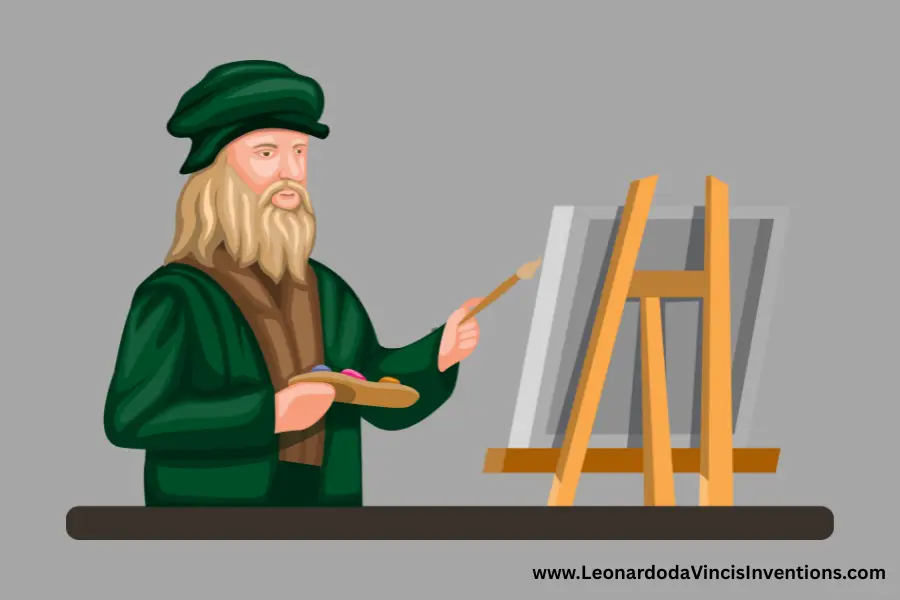
Leonardo da Vinci was a leading artist and thinker in the Italian Renaissance.
He blended creativity, curiosity, and careful observation in his artwork.
His paintings and sketches gained worldwide fame.
His work shows a strong focus on learning and discovery.
Famous Artworks: Mona Lisa and The Last Supper
Leonardo da Vinci is best known for painting the Mona Lisa and The Last Supper.
The Mona Lisa is famous for her mysterious smile and is one of the most recognized portraits in the world.
The painting shows Leonardo’s skill in capturing human emotion and lifelike detail.
The Last Supper, created in a monastery in Milan, tells the story of Jesus’ final meal with his disciples.
Leonardo used careful observation to show each person’s reaction on their face.
These two artworks are often seen as masterpieces of the Renaissance.
They demonstrate his profound understanding of anatomy and lighting.
Mastering Sketches and Drawing Techniques
Leonardo excelled at drawing and sketching before starting his paintings.
He filled notebooks with sketches of people, animals, plants, and inventions.
His drawings show his careful study of nature and anatomy.
This helped him create lifelike art.
Many of his sketches are now regarded as important works in their own right.
He often experimented with new techniques, such as drawing with both hands or trying different materials.
This exploration helped Leonardo become a master in both quick sketches and detailed art.
Children can read more about his early life and training as an artist in this guide for kids.
Creativity and Imagination in Renaissance Art
Leonardo used imagination and scientific observation to shape his art.
He drew flying machines, strange inventions, and detailed maps.
His creativity enabled him to blend science with art, making him both a renowned painter and an inventor.
During the Renaissance, artists such as Leonardo explored concepts of nature, light, and the human form.
He did not just copy what he saw; he experimented and innovated in every artwork.
More about his creative work can be found at National Geographic Kids.
Leonardo da Vinci – Inventor and Engineer
Leonardo da Vinci combined art and science in his inventions.
He utilized his curiosity about nature and the world to conceive ideas that were far ahead of their time.
Amazing Inventions and Flying Machines
Da Vinci is known for his creative inventions, many of which he sketched in his notebooks.
He imagined machines, such as an early version of the helicopter and a flying machine with wings shaped like birds.
He also designed bridges, water pumps, and even a type of armored vehicle.
His flying machines demonstrate how he studied birds and attempted to replicate their movements.
Although most of his inventions were never built while he was alive, the detailed drawings and ideas inspired future technology.
His work as an engineer reveals his interest in solving real-world problems through creative thinking.
Experimentation and Innovation in Science
Leonardo da Vinci employed careful observation and experimentation to comprehend the inner workings of various phenomena.
He studied anatomy by dissecting animals and even human bodies, which enabled him to create detailed drawings of bones, muscles, and organs.
These drawings led to a better understanding of human biology.
He took notes on everything he saw, from plants and water movement to machines and people.
His work as a scientist pushed learning forward during the Renaissance.
Leonardo’s curiosity and commitment to study helped shape the fields of engineering, science, and art.
Observation and Discovery: The Mind of a Genius
Leonardo’s mind never stopped asking questions.
He combined his skills as an artist, inventor, and scientist to examine the world closely.
His notebooks, filled with sketches and diagrams, reveal his passion for learning and understanding the natural world.
He wrote backwards, which added a layer of secrecy to his thoughts and ideas.
His sharp observation skills helped him discover how things moved, changed, and worked.
This made Leonardo da Vinci one of the most important inventors and thinkers of his time.
Leonardo da Vinci – Scientist and Anatomist
Leonardo da Vinci explored science and anatomy with intense curiosity and imagination.
He combined his skills as an artist, inventor, and scientist to study the human body and nature.
He left behind detailed sketches and ideas that changed how people think about discovery and learning.
Anatomy Studies and the Human Body
Leonardo da Vinci carefully studied the human body by dissecting cadavers and observing their internal parts.
He drew hundreds of detailed sketches of bones, muscles, and organs to help people better understand anatomy.
His drawings, such as the famous Vitruvian Man, demonstrated how art and science could collaborate.
Leonardo also wrote notes explaining how the heart, lungs, and brain function.
By drawing the body from different angles, he demonstrated to doctors and artists new ways to visualize how bones and muscles move.
Today, his anatomical sketches remain crucial for science and medical research.
Exploring Nature Through Observation
Leonardo spent much of his life closely observing nature in Italy.
He believed that careful observation was the key to understanding the world and improving art and science.
By watching how birds fly and how water moves, he filled his notebooks with countless ideas and sketches.
He often compared the human body to nature, seeing patterns in animals, plants, and rocks.
His notes included ideas for flying machines based on animal wings and inventions inspired by rivers and trees.
Leonardo’s ability to see connections in nature helped him become a true genius of the Renaissance.
Experimentation in the Renaissance Era
During the Renaissance, most people accepted the views presented in ancient books on science. Leonardo da Vinci, however, put his ideas to the test.
He built models, mixed chemicals, and tested inventions to see how they worked. Instead of guessing, he used creativity and hands-on experimentation to solve problems.
Leonardo often challenged old beliefs and made discoveries. His experiments led to early designs for machines, such as helicopters and bridges, that demonstrated innovation and imagination.
He used observation and testing to set a higher standard for scientists and inventors of his time.
Leonardo da Vinci’s Legacy for Kids
Leonardo da Vinci was a true Genius from Italy who changed how people see art, science, and invention. Kids today still learn from his creativity and curiosity.
Polymath: Master of Many Talents
Leonardo was known as a Polymath, which means he possessed many talents and excelled in more than one subject. He worked as a Painter, Sculptor, Engineer, Scientist, and Inventor.
He studied topics such as anatomy, Nature, and Mathematics. He created famous Artworks like the Mona Lisa and The Last Supper.
His notebooks were full of detailed Sketches, inventions, and ideas. Leonardo da Vinci’s biography for kids explains that he explored flying machines and innovative drawing techniques.
He always wanted to learn and try new things. Discovery and Experimentation were part of his daily life.
The Lasting Impact on Art and Science
Leonardo’s Artworks changed painting forever. He used light and shadow to make his images look more real.
His careful Observation helped him study human bodies and Nature. His sketches continue to aid doctors and students today.
Kids can see his ideas in science books, history lessons, and museum exhibits.
As an Engineer, Leonardo planned bridges and war machines. He even drew early designs for a flying machine.
His Inventions and imagination were ahead of his time.
Inspiring Creativity and Learning Today
Leonardo’s story inspires kids to follow their curiosity and never stop Learning. He proved that asking questions, experimenting, and Observation are keys to Discovery.
Students examining his sketches or paintings learn that Creativity and Innovation can emerge from studying both art and science.
Many teachers use Leonardo’s life to show that imagination is essential in every subject. Schools encourage kids to draw, build inventions, and think like Leonardo.
Frequently Asked Questions
Leonardo da Vinci was a talented artist, inventor, and scientist from the Italian Renaissance. He created famous paintings, designed machines, and studied the world around him with curiosity and detail.
What is a simple biography of Leonardo da Vinci?
Leonardo da Vinci was born in 1452 in Vinci, Italy. He became known for his painting, scientific studies, and inventions.
He is celebrated for his creative genius and his significant contributions to the Renaissance. You can read a simple Leonardo da Vinci biography for kids for more details.
What are some facts about Leonardo da Vinci for kids?
Leonardo painted the Mona Lisa and The Last Supper. He was also an inventor and scientist who studied human bodies to learn about anatomy.
Leonardo filled notebooks with drawings of inventions, plants, and animals.
Did da Vinci have ADHD?
Some people today think Leonardo may have shown signs similar to ADHD because he started many projects but finished only a few. There is no proof or official diagnosis, and ADHD as a condition was not known in his lifetime.
What are 5 interesting facts about Leonardo da Vinci?
- Leonardo wrote many of his notes in mirror writing, which is known as a form of backward writing.
- He designed flying machines hundreds of years before airplanes existed.
- He was interested in anatomy and studied human bodies to enhance his artistic skills.
- Leonardo created detailed maps.
- He was skilled in music and played several instruments.
What did Leonardo do as a kid?
As a child, Leonardo loved nature and explored the countryside around Vinci. He showed talent in drawing and invented simple machines.
He became an apprentice in an artist’s workshop when he was a teenager.
How old is The Mona Lisa?
Leonardo started painting the Mona Lisa around 1503 in Florence, Italy. As of 2025, the painting is about 522 years old.
What was da Vinci’s IQ?
There is no accurate way to test Leonardo’s IQ, as he lived before IQ tests were developed. Many scientists and historians believe he may have had an exceptionally high IQ, based on his work and abilities.
Who painted The Last Supper?
Leonardo da Vinci painted The Last Supper. It is a famous mural found in a monastery in Milan, Italy.
Was da Vinci left-handed or right-handed?
Leonardo da Vinci was left-handed. He used his left hand for writing and drawing, which some people believe helped his creativity.
What caused Leonardo da Vinci’s death?
Leonardo da Vinci died in 1519 at the age of 67. Most records say he died from natural causes. He likely passed away due to old age and health problems.
 I’m Leonardo Bianchi, the mind behind Leonardo da Vinci's Inventions. Thanks for visiting.
I’m Leonardo Bianchi, the mind behind Leonardo da Vinci's Inventions. Thanks for visiting. 
